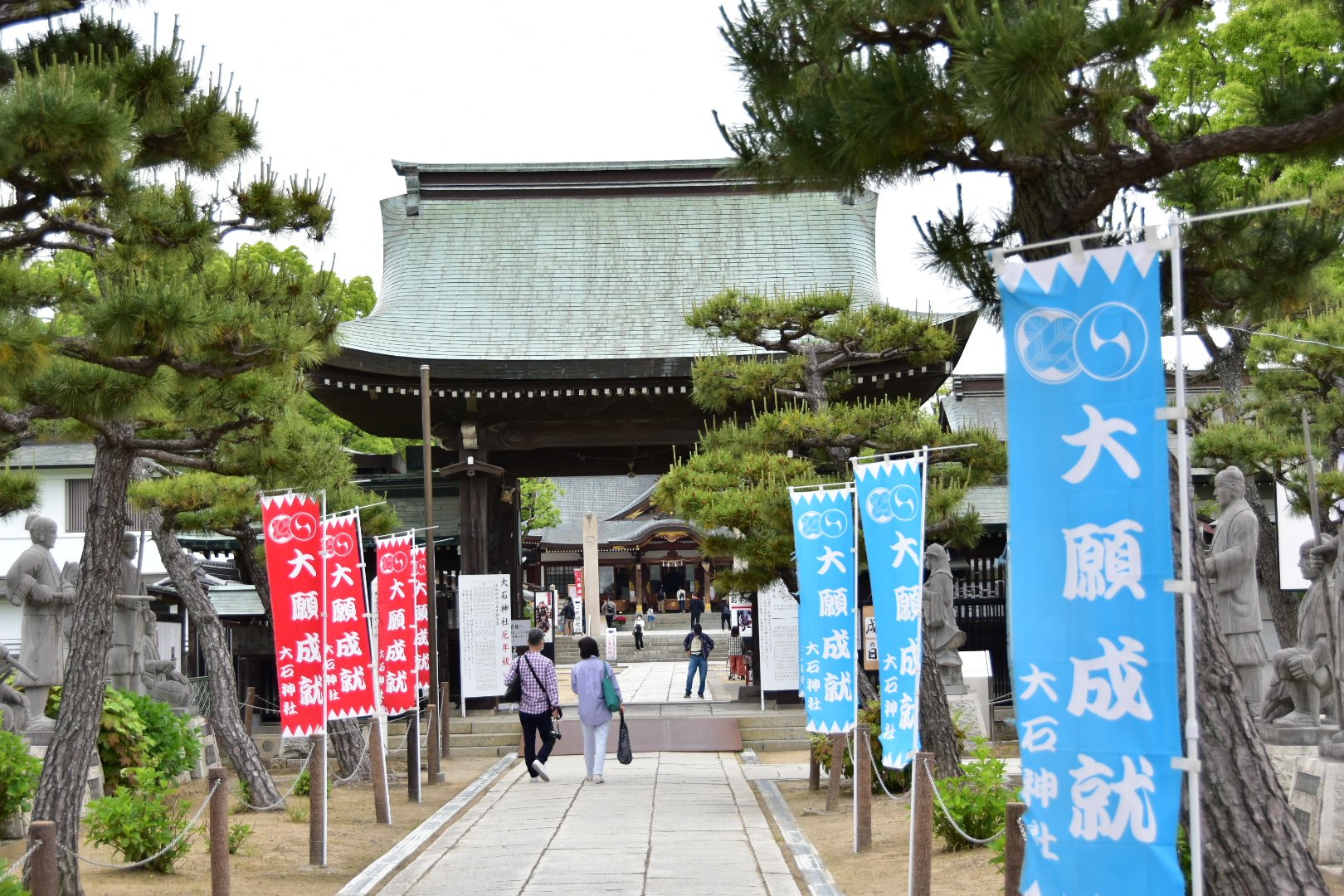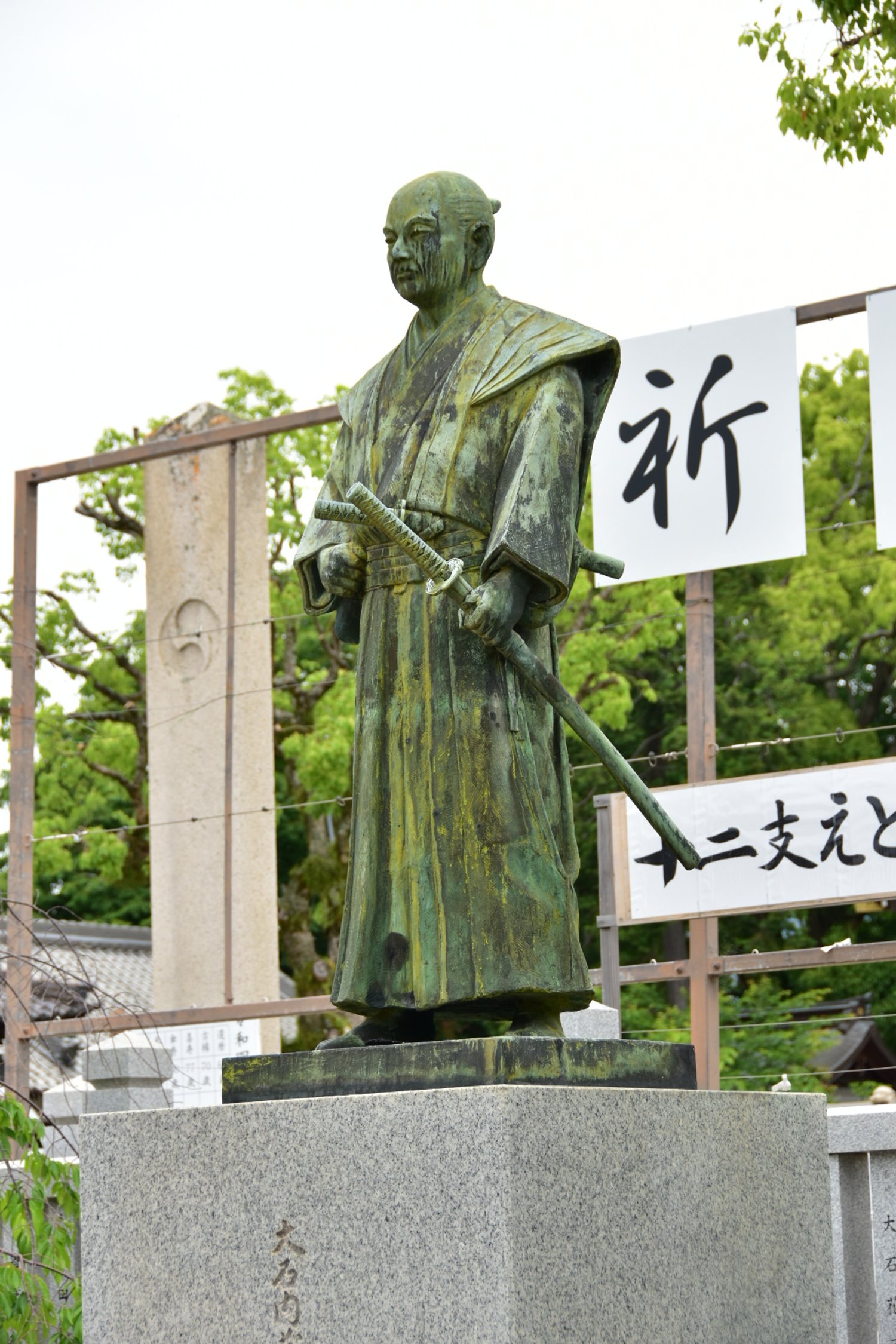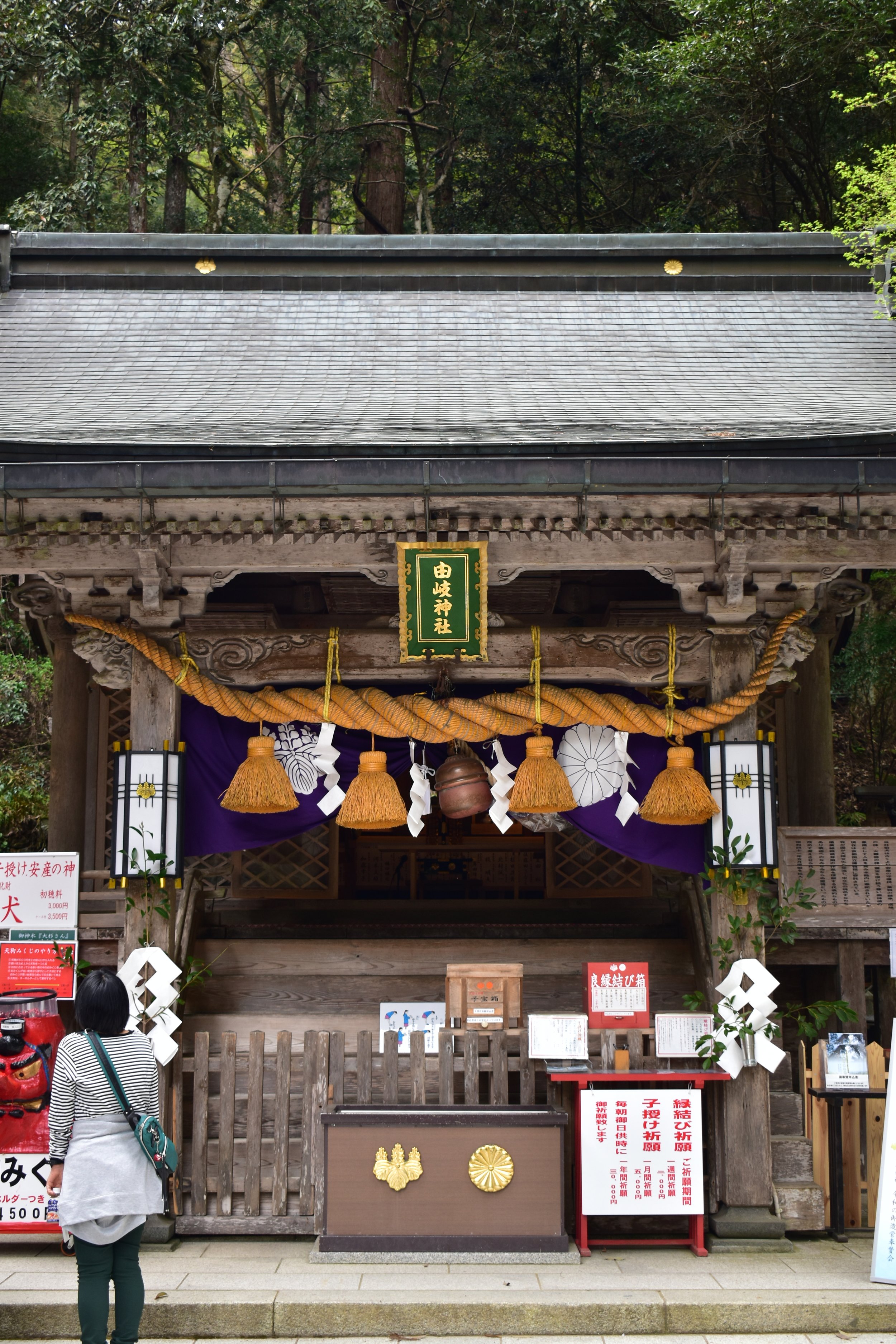Akô Ôishi Jinja
Originally the residence of Ôishi Kuranosuke, the land was converted into a shrine to commemorate the revenge plot organized by Ôishi and his 46 fellow comrades. The plot is known as the Ako Incident but is more well known in Japan as Chushingura, and in the west as the 47 Ronin. Because Kuranosuke was a high ranking samurai, his residence was just down the road from the castle gate making the correlation between the two unmistakable: this is a warrior’s shrine.
For the casual: 5. For the educated: 9.
I stopped myself from giving this shrine a 10 only because the distance one needs to travel to get to the shrine as well as the lack of noteworthy locations nearby (I’m lumping the shrine and the castle grounds together here). The shrine is lovely which is why I think people should give it a serious chance, but I also think that on the larger scale of things, it’s the story that makes this such a great place. If you are unfamiliar with the story, I invite you to read my post about Sengakuji in Tokyo. For now at least, I’ll say that the tale of these warriors is about insult, honor, and redemption on a heroic level. If you know the story, it’s hard not to feel the waves of emotions as you walk around, signs and pictures telling the story, and the statues of the 47 lining the walkway to the main gate. Past the main gate there is an area where guests can purchase snacks, drinks, and souvenirs. There are also barrels of sake to be opened on New Year’s, small statues of the animal zodiac, and lines to hang omikuji (fortune telling papers).
The main shrine can be divided into two sections: there’s the shrine itself and the shrine museum. The shrine itself is quite lovely and the current year’s zodiac animal is on display. If you follow a path that goes around the wall of the shrine to the left, there are images and placards explaining the story of the Akô warriors. The path leads by the remains of sacred trees long felled and now only marked by countless coins squeezed into any available crack for good luck. The shrine museum requires an entry fee, but it’s full of artifacts from the story and from the real people. As a bonus, visitors can get their photo taken with a large drum that says Chushingura, the kabuki drama based on the Akô Incident.













